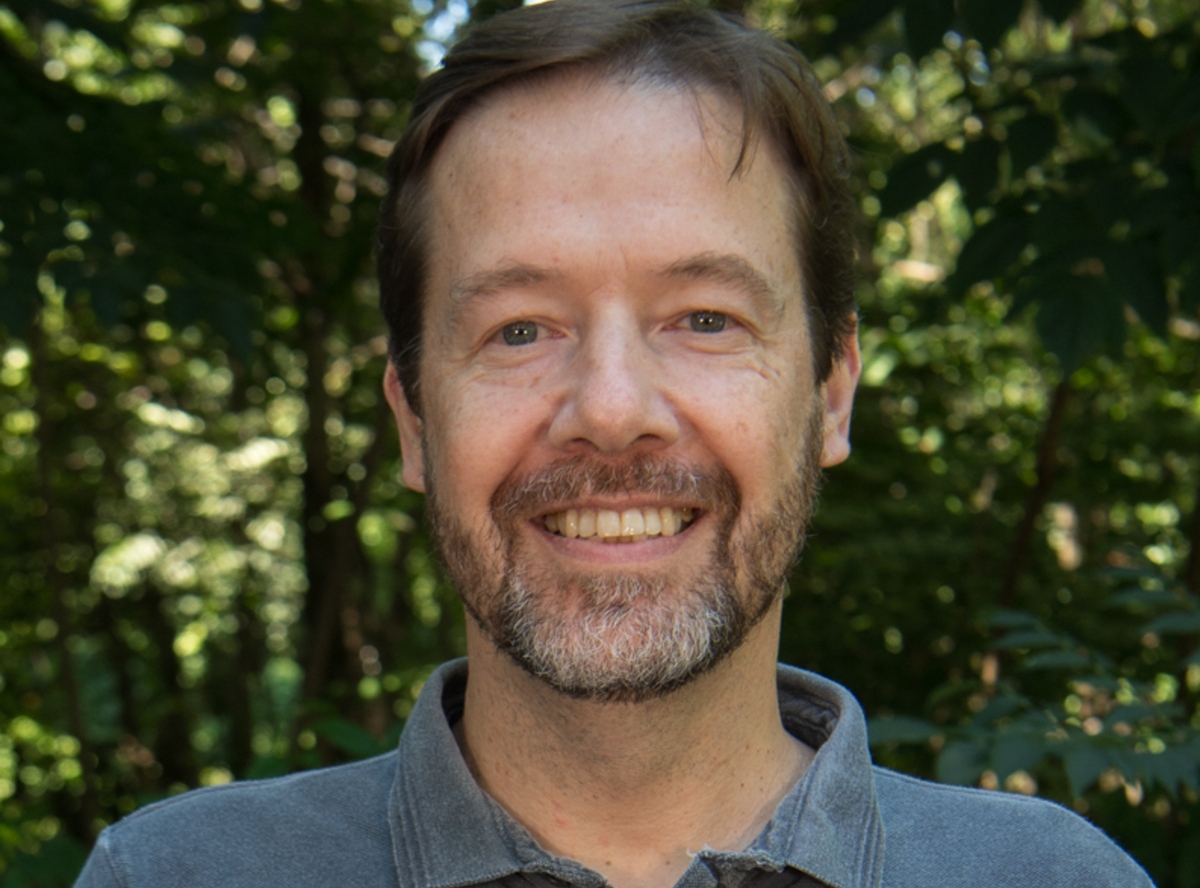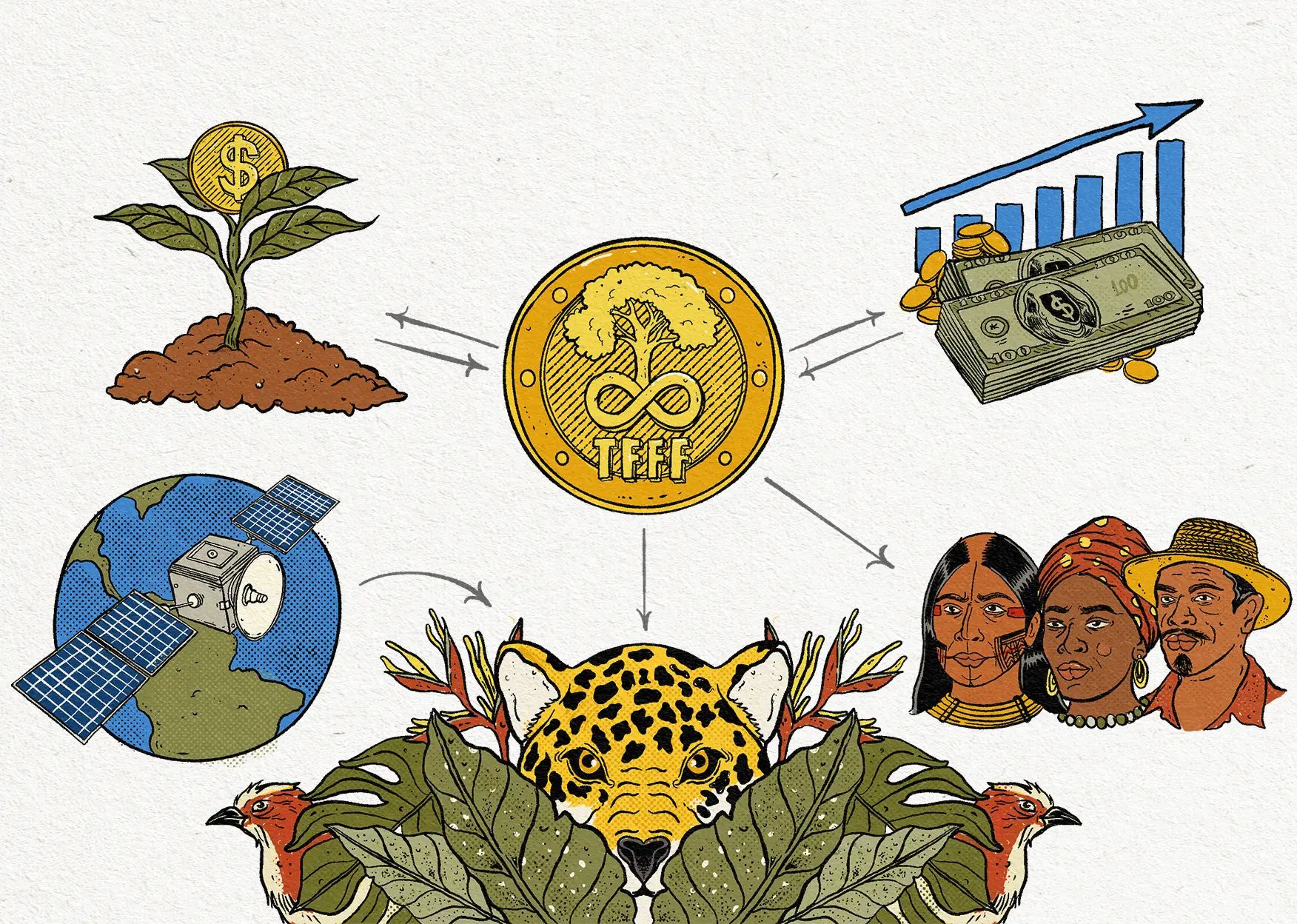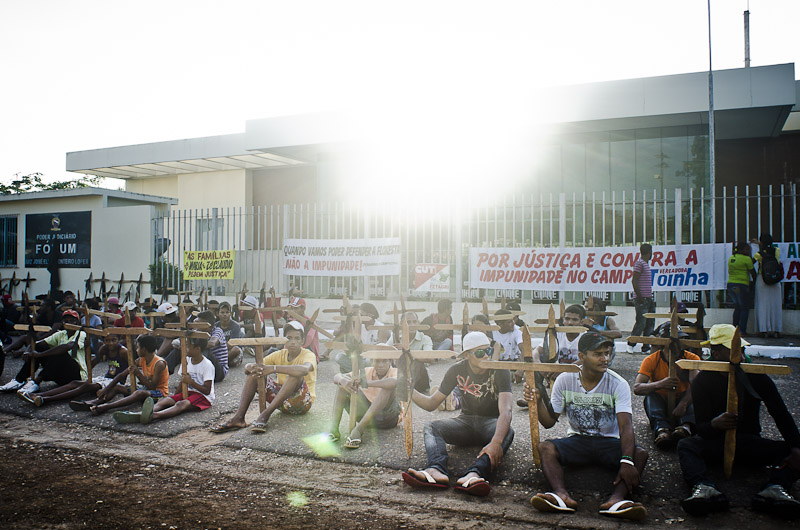
Historic initiative or commodification of forests? Carlos Rittl talks about the TFFF
Global Director of Forest and Climate Change Policy at the Wildlife Conservation Society, contributed to the implementation of the project
Júlia Neves, from NINJA’s Collaborative Coverage at COP30
On Thursday (6), during the Climate Summit in Belém (PA), the Tropical Forests Forever Fund (TFFF) was officially launched, a historic initiative that promises to revolutionize environmental financing. On the occasion, the global director of Public Policies for Forests and Climate Change at the Wildlife Conservation Society, Carlos Rittl, told Mídia Ninja details about the project’s implementation.
Ninja – Tell us, what is the ‘TFFF’ that everyone is talking about?
Carlos Rittl – The TFFF is a financial mechanism to compensate countries, local communities, and indigenous peoples — the best guardians of the forests — for the role they play in protecting these territories. Thus, countries that have low deforestation rates will have the right to receive financial resources proportional to the areas of remaining forests, but they will also have proportional discount rates for deforested and degraded areas and the obligation to allocate at least 20% of the resources to indigenous peoples.
Ninja – Is it truly innovative?
Carlos Rittl – It is innovative in several aspects. Firstly, because its logic is not based on donations. You raise funds from the government or the financial market, from pension funds, for example. And these resources are placed in the TFFF’s financial fund, called TFIF (Tropical Forests Investment Fund), and from there, they will be invested in areas consistent with the project’s purpose. The profit from these investments pays the investors, and the profits exceeding the initially agreed fixed rate compensate the committed countries that meet certain eligibility criteria.
It is innovative because the logic changes. You create an investment-based instrument to compensate countries based on the area of ‘’standing forests’’, with discounts for non-compliance and with obligations to pass on a percentage to traditional peoples.
Furthermore, I believe that, in an unprecedented way, for the first time we have a financial instrument for forests and the environment that invites indigenous peoples and the local community to ‘’design’’ and discuss, mainly two things: first, how the TFFF does not represent a threat to rights — quite the opposite, it strengthens rights — and second, how to guarantee direct access to those 20% of resources. What are the pathways for this to truly reach the organizations and not be appropriated by the government, which simply stamps here and there, claiming the money was invested in policies aimed at indigenous peoples…
For this reason, the Global Alliance of Territorial Organizations (GATC) was invited to coordinate a consultation process with indigenous peoples’ organizations and local communities on a global scale, to listen to different views, contexts, needs, and concerns so that we could define the TFFF’s structure and concept.
Ninja – What has been your relationship with the TFFF so far?
Carlos Rittl – In 2023, I started to dialogue with the Brazilian government to better understand the status of the proposal, as a process had already begun to present the project at COP 28, which took place in Dubai, United Arab Emirates. After that, voluntarily, my colleagues and I in my organization began to make some suggestions. For example, initially, Brazil’s proposal did not incorporate the degradation component as a factor that would result in discounts, so we began to argue that standing forests are very important, but highly degraded forests do not play the role of forests with more integrity from a climate and biodiversity perspective, especially for indigenous peoples and local communities. This was our first contribution.
The following year, we began to help in the discussion of how to map tropical rainforests, since the project aimed to reward countries for the conservation of these forests. We sought to know where these forests were, what the technical references were to map and identify where comparable biomes existed around the world.
Then, last October, we were invited to participate in the meetings between countries, the so-called TFFF Steering Committee which, in addition to Brazil, included the participation of Colombia, the Democratic Republic of Congo, Indonesia, Malaysia, Norway, France, Germany, and the United Kingdom. We provided technical support to respond to questions raised by these countries, by organizations, and by the public.
Ninja – After the launch, what is the feeling and perspective you bring from this moment?
Carlos Rittl – I think it was an extremely important day. The project is officially born, but it will still be institutionalized. You have a concept on paper, but the different governance instances still need to be created… Very recently, the Council approved that the World Bank will be the official entity to host the TFFF, so we need to align things. It’s like having the blueprint of a house, but it still needs to be built.
Today consolidates this collective construction process that originates from the Global South, which invites communities and indigenous peoples to participate and shows that it is possible to create an innovative solution, even more so at a COP with so much symbolism for being held in the Amazon, the home of two great leaders of the project, ministers Sonia Guajajara and Marina Silva. It was they, along with Fernando Haddad, who contributed to the TFFF becoming a priority agenda item for President Lula.
The announcements of resource contributions we already have, something around $5 billion, are very important, but more than that, it is the number of countries that have provided support. Many people are only looking at the countries that contributed resources, but for me, the sign of the TFFF’s success comes much more from another side. For example, from the more than 50 developing tropical countries that have tropical forests and have already signed the project’s letter of commitment. This is an indication of success. Something new is being created, on a scale never before seen, in a different way. This collective effort and the belief in this concept show that it is possible for the TFFF to start, improve over time, be tested, and refined.
Ninja – Some criticisms arose after the project’s launch regarding the commodification of forests. What is your opinion on these perspectives?
Carlos Rittl – The TFFF doesn’t sell anything. It is based on an investment logic but appropriates part of the profits generated to cause positive impacts, to support countries that are already making efforts in deforestation reduction, and to recognize the role of indigenous peoples and communities. There is no commercialization in this case. The fact that it is based on investment logic is innovative. Especially at a time when we know that the gap in investments for forests is enormous and the resources allocated to communities are negligible…
Countries that meet the eligibility criteria in that year will receive compensation, but only if they comply with the resource allocation rules. The following year, if they continue to comply, they continue to receive resources proportional to the forest areas. Once they fail to meet the criteria or the deforestation rate increases, they stop receiving payments. For those who think we should have donations, since forests play a fundamental role and should be recognized for it, I also agree with that. But these instruments do not exist today.
Ninja – You say that the TFFF can generate resources on a scale we haven’t seen before. How would that be?
Carlos Rittl – Let’s imagine a scenario where the TFFF has reached the goal of mobilizing $125 billion in investments and is generating between three or four billion dollars per year, with 20% being allocated to indigenous peoples and local and traditional communities. That would amount to between 700 and 800 million dollars per year. Do these resources exist today? If we look at a 5 or 10-year horizon, we will be talking about a resource greater than everything that has been mobilized in the last 20 or 30 years.
I think there is merit in this, there is merit in the idea, and again I affirm that the fact that we have the participation of communities in the design of the mechanism is something that shows that the conditions under which it should operate to benefit indigenous peoples and traditional communities were placed directly by these people. To be part of this, they said how they saw it working, how they viewed their rights, and how they viewed access to the resources, and that is what we also believe in.



